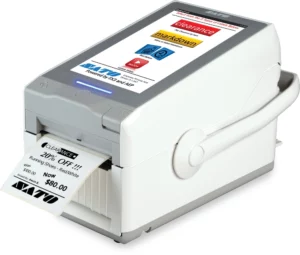Why is Asset Tracking Critical for Your Business?
Today, asset tracking is an essential function of any business. If you don’t know what you possess, how will you know how much each item costs or if it is still in good working order? An asset tracking software consolidates all of your equipment data into a single platform that you can access at any time, allowing you to find items quicker, be more proactive with maintenance, and make better purchasing decisions by understanding the total cost of ownership.
Asset tracking is also essential for any workplace management team. You’ll need to keep track of your possessions in order to determine how much something would cost. Asset tracking helps any firm estimate the cost of everything from equipment to office furniture. Some firms employ manual tracking, although it can be problematic for bigger enterprises. As a consequence, asset monitoring solutions are necessary for effective operation.
If you’re thinking about purchasing asset monitoring software, here’s a deeper look at the advantages and what to think about as you weigh your alternatives.
Why Do You Need An Asset Tracking Software?
Reduce Administrative Costs
Since asset monitoring eliminates the need for manual asset accounting, which provides potential for human mistake and might result in extra expenditures, your staff will have more time to focus on duties that generate income.
Maintain Your Assets
Knowing the live status of your equipment makes it much easier to maintain it. If you have 50 trucks, for example, you won’t know when they’re due for maintenance unless you’ve documented it. Asset tracking software allows you to set up automated reminders when it’s time to conduct normal repairs, resulting in fewer unforeseen problems and downtime.
Save Costs
You might be losing money without even realizing it if you don’t keep track of your possessions. Asset tracking helps you avoid losses and holds your team accountable for improperly handling equipment.
Improve Customer Service
When you enhance the function of your firm, clients will notice right away. Customers will surely benefit from these internal enhancements, whether it’s a better-stocked inventory, better-informed workers, or an overall more efficient business. Some consumers may want to know if you have asset monitoring software since it speaks to your dependability as a partner, depending on your primary business.
Improve Accuracy
On average, companies that adopt RFID see their inventory count accuracy go from 63% to 95%. Your single source of truth may be an asset monitoring software platform. Naturally, having this degree of knowledge allows you to see where your assets are, how they’re being used, and what steps need to be taken to maintain assets in play at all times. There’s no need to make educated guesses any longer. Hard facts drive corporate choices with asset tracking reports.
Who Needs an Asset Tracking Software?
Asset tracking systems are critical for all sorts of businesses, but especially for those that rely significantly on assets to run their operations. Airlines, construction businesses, fleet companies, and manufacturers, for example, all require complicated equipment to be tracked and maintained. Equipment downtime leads to lost production, income, and the possibility for client relationships to be harmed in these businesses.
Even organizations in less equipment-intensive industries must monitor asset performance. A hotel or restaurant chain, for example, may have hundreds of buildings that must all be adequately maintained to assure the safety and comfort of staff and customers.
Maintenance employees, facilities managers, and IT executives aren’t the only ones that benefit from asset monitoring. Accounting and buying managers who are in charge of inventory tracking will benefit from it as well.
Even Disney, the entertainment giant, relies heavily on RFID asset tracking for its operations. Disney can offer visitors a pre-planned itinerary with the least amount of wait times based on visitor interests, easy booking and check-in of shuttles and hotels, ride reservation, and eliminates the need to carry cash as the band is linked to the visitor’s credit card.
How Does an RFID Asset Tracking System Work?
The essential concepts of how an RFID tracking system works are the same whether it’s used in the medical field for equipment or in a warehouse to monitor a manufacturer’s supply chain. To begin, you’ll need the following tools:
- RFID
- RFID Tags
- An antenna (a device that receives and transmits signals)
- A reader for RFID tags
The RFID asset tracking process may be broken down into four steps after the proper equipment is in place:
- Data is saved on an RFID tag that is affixed to an object and has a unique Electronic Product Code
- The signal of a nearby RFID tag is detected by an antenna.
- The data contained on the RFID tag is received by an RFID reader that is wirelessly attached to the antenna.
- The data is subsequently transmitted from the RFID reader to an asset monitoring database, where it is stored, analyzed, and acted upon.
The initial step is pretty simple, depending on how you choose to implement your RFID asset monitoring system.
How to Buy RFID Asset Tracking Systems?
At Makamat, we have a very unique operational procedure. Our outstanding team of RFID experts is fully devoted to seeing your project through to completion. Makamat has got you covered no matter what RFID solution you require. Our operational procedure with customers is assured to be tailored to their specific operational requirements.
Learn more about our operation, and how you can begin your RFID implementation journey here.


